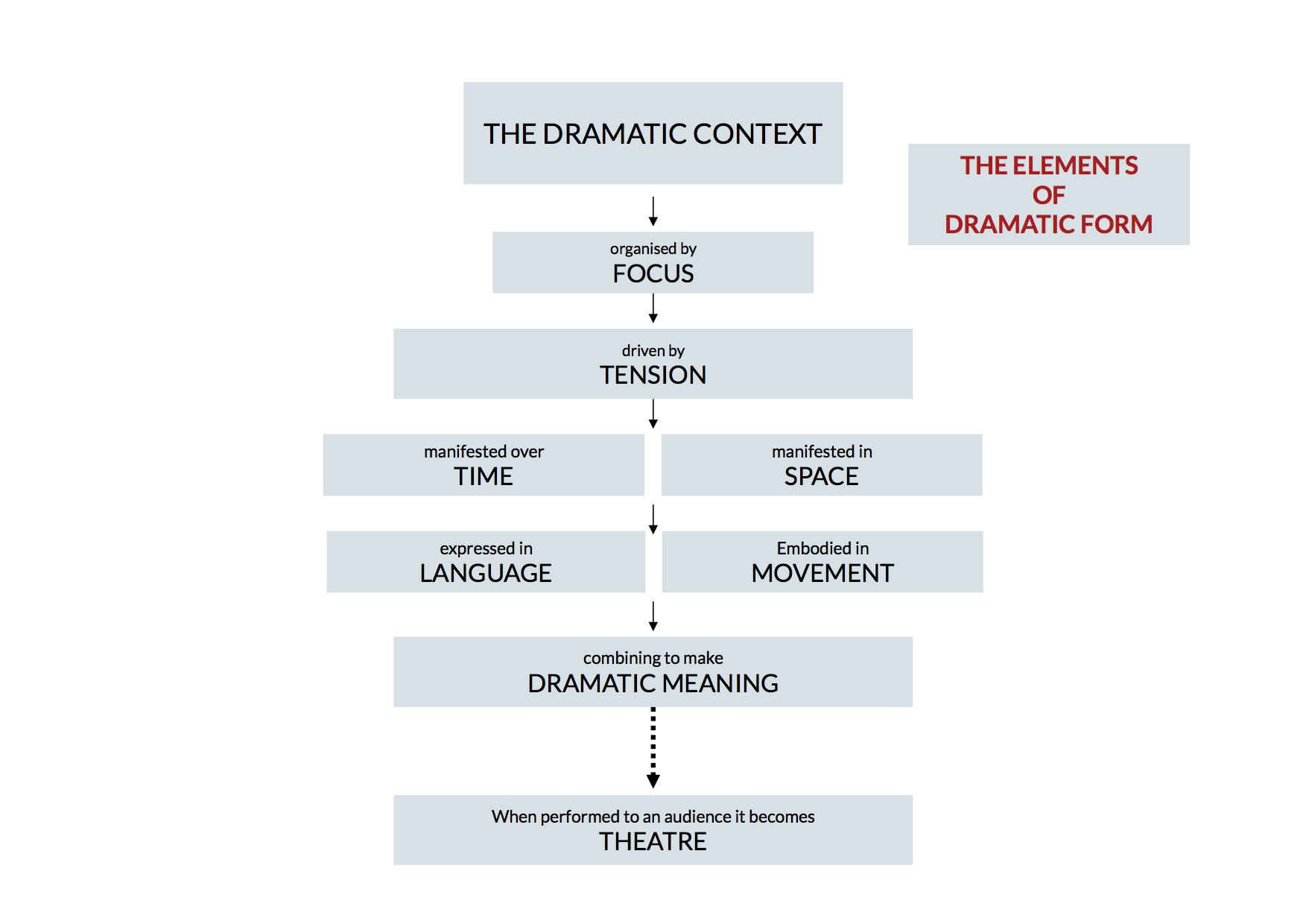PDF
573KB
Drama – The elements of dramatic form
The building blocks of drama from children’s pretend play to classic plays
Drama starts with:
The dramatic context
- A human situation
- What’s happening?
- Where?
- When?
- Its characters and their roles
Organised by:
Focus
- The dramatist's framing of the situation and characters in the human context
- The chosen distance of the human situation from the viewer or participant
Driven by:
Tension
- What's at stake?
- Dilemmas faced by the characters
- Conflict between the characters
- Suspense about what may happen
- Mystery of what is unrevealed
- Tension of the task for the characters to achieve their aims
- Surprise for the characters
Manifested in:
Space
- Embodied action
- Location and setting
- Light and darkness
Manifested over:
Time
- Plot and narrative
- Cause and effect
Expressed in:
Language
- Voice and words
- Non-verbal paralanguage
- Sound and silence
Embodied in:
Movement
- Gesture
- Physical relationships
- Movement and stillness
Combining to make:
Dramatic meaning
- Symbols
- Atmosphere
- Understanding
- Aesthetic effect
When performed to an audience it becomes:
Theatre
- Acting
- Design
- Directing
- Staging
- Production
